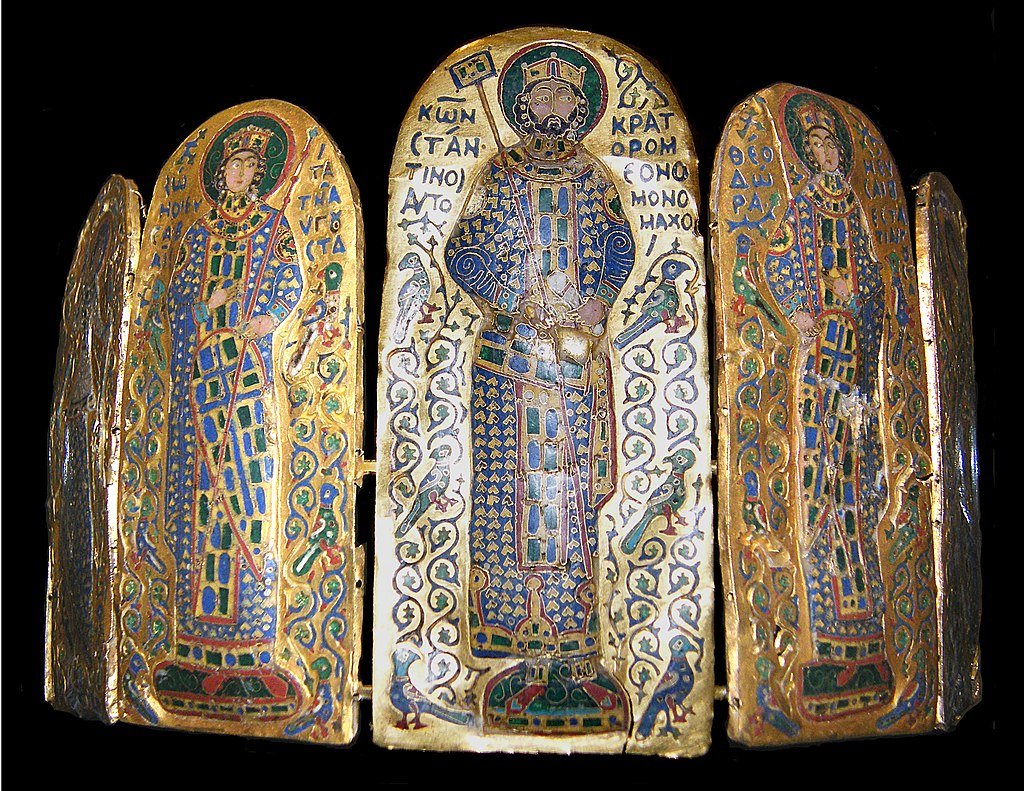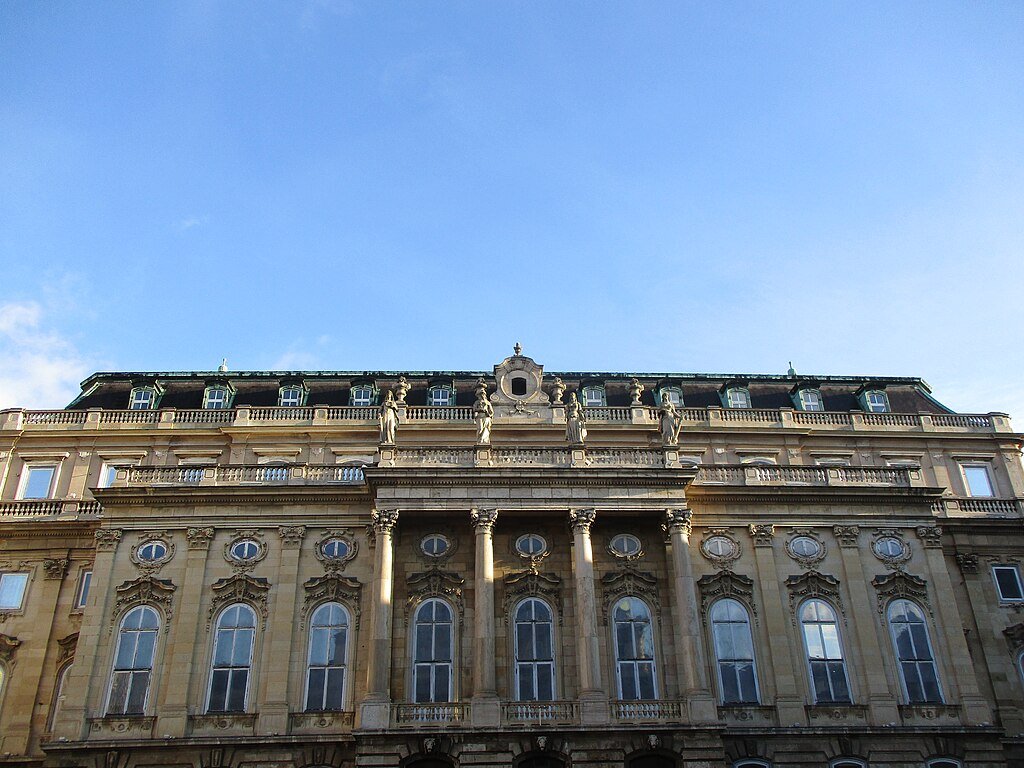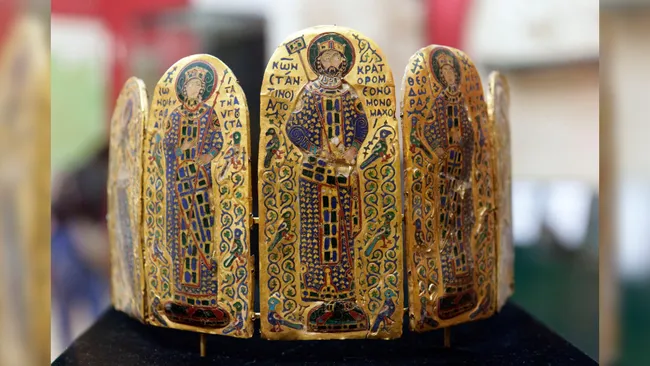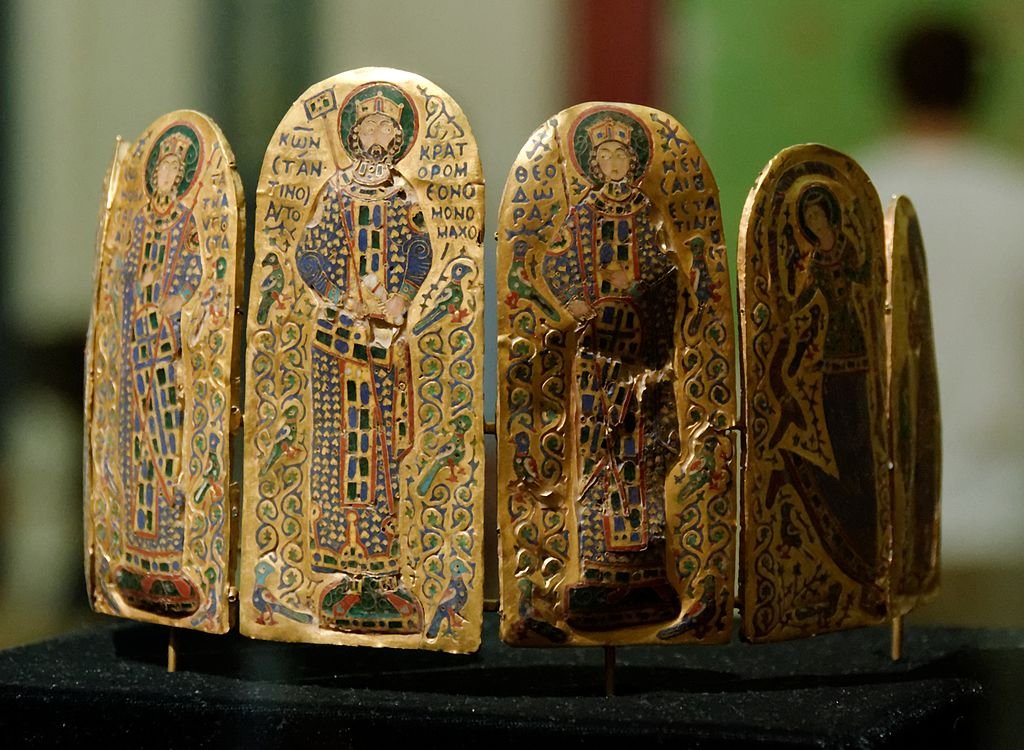In 1860, a farmer in the quiet Slovak village of Ivanka pri Nitre found something much more unusual than roots or rocks, a beautiful crown with gold panels buried in the ground. Historians, archaeologists, and art experts would spend the next hundred years arguing about whether this accidental discovery was the lost treasure of Byzantine Emperor Constantine IX Monomachos or a very detailed fake from the 1800s.
The Monomachos Crown, which is now in the Hungarian National Museum in Budapest, is one of only three Byzantine crowns that are still around. The three rulers depicted on its seven enamelled gold panels are Constantine IX, his wife Empress Zoë, and her sister Theodora. They ruled the Byzantine Empire together in the 11th century. But how did this imperial relic, made between 1042 and 1050, get so far away from Constantinople? And why is there still a lot of debate about whether or not it is real?
The Crown’s Mysterious Design: A Puzzle in Gold and Enamel

The Monomachos Crown is not a circlet but a series of seven gold plates, the tallest 11.5 cm (4.5 inches) tall. The central panel depicts Constantine IX Monomachos, his surname meaning “the one who fights alone” with a cavalry standard and a roll of purple silk, symbols of imperial rank. Standing beside him are Empress Zoë and Empress Theodora, both identified in Greek as “most pious.”
Four lesser panels round out the group: two show dancing women with halos (perhaps symbolic “graces”), and the rest embody Justice and Humility, virtues that were at the heart of Byzantine kingship. Interestingly, the plates are symmetrically perforated, indicating that they must have originally been sewn on a textile cap or diadem instead of a stiff crown.
A Throne Shared by Three: The Unusual Reign of Constantine IX

It wasn’t normal for Constantine IX to become powerful. He wasn’t born into royalty, but he became emperor by marrying Empress Zoë, who was the daughter of Emperor Constantine VIII. But Zoë, who had already lost two husbands, insisted on ruling with her sister Theodora, making a rare triumvirate.
The crown’s design shows this unusual power dynamic: Constantine is in the middle, and the sisters are on either side of him as equals. Historians think that the crown might have been a diplomatic gift to King Andrew I of Hungary, who married a Kievan princess who was related to Constantine’s family.
The Forgery Debate: Is the Crown a Medieval Masterpiece or a Hoax?
In 1994, Byzantine expert Nikolaos Oikonomides made a shocking claim: he said the crown was a fake from the 19th century. Here are his reasons:
- Mistakes in Greek inscriptions, like misspelt words.
- Imperial clothing that is out of the ordinary (for example, mismatched regalia).
- It was found in Slovakia, which is far from Byzantine trade routes.
But in 2000, art historian Etele Kiss shot back:
- The “mistakes” could be due to changes in regional dialects.
- The clothes in this piece are similar to those in other Byzantine art.
- It could have been a gift to a ruler in Slovakia, which would explain where it is.
The debate is still going on, and some people even say that the panels were ceremonial armbands for military victories.
The Dancers’ Secret: A Symbolic Chorus or Political Propaganda?
One of the most mysterious parts of the crown is the haloed dancers. They kick one leg back and their veils billow. There weren’t many sacred dances in Christian art, so who are they?
Some people say they are a “chorus of graces,” which is a way of saying they are virtuous. Another theory says they are like performances at court that honoured Constantine’s reign. A point of view that makes you think? They might show Skleraina, Constantine’s mistress, who made Zoë mad when she came to court.
From Plow to Museum: The Crown’s Perilous Journey

After being found in 1860, the crown went through the hands of Hungarian nobles before ending up in the National Museum in Budapest. But the story of how it got to Slovakia is a mystery:
- Some people think it has something to do with King Solomon of Hungary, who is said to have buried it while escaping in.
- Some people think it was loot from a war or a bribe to get allies.
Its survival is amazing because most Byzantine crowns were melted down during wars or iconoclasm.
Conclusion: A Crown That Refuses to Yield Its Secrets

The Monomachos Crown is not just an old thing, it’s a Rorschach test for historians. Is it proof of Byzantine diplomacy? A fake that was made to trick people? Or a ceremonial object that has been lost and used in different ways over the years?
The crown’s appeal comes from the fact that it has no final answer. Kiss said, “More research is needed,” but for now, this golden mystery keeps stunning and defying.
Sources:

Suhail Ahmed is a passionate digital professional and nature enthusiast with over 8 years of experience in content strategy, SEO, web development, and digital operations. Alongside his freelance journey, Suhail actively contributes to nature and wildlife platforms like Discover Wildlife, where he channels his curiosity for the planet into engaging, educational storytelling.
With a strong background in managing digital ecosystems — from ecommerce stores and WordPress websites to social media and automation — Suhail merges technical precision with creative insight. His content reflects a rare balance: SEO-friendly yet deeply human, data-informed yet emotionally resonant.
Driven by a love for discovery and storytelling, Suhail believes in using digital platforms to amplify causes that matter — especially those protecting Earth’s biodiversity and inspiring sustainable living. Whether he’s managing online projects or crafting wildlife content, his goal remains the same: to inform, inspire, and leave a positive digital footprint.




